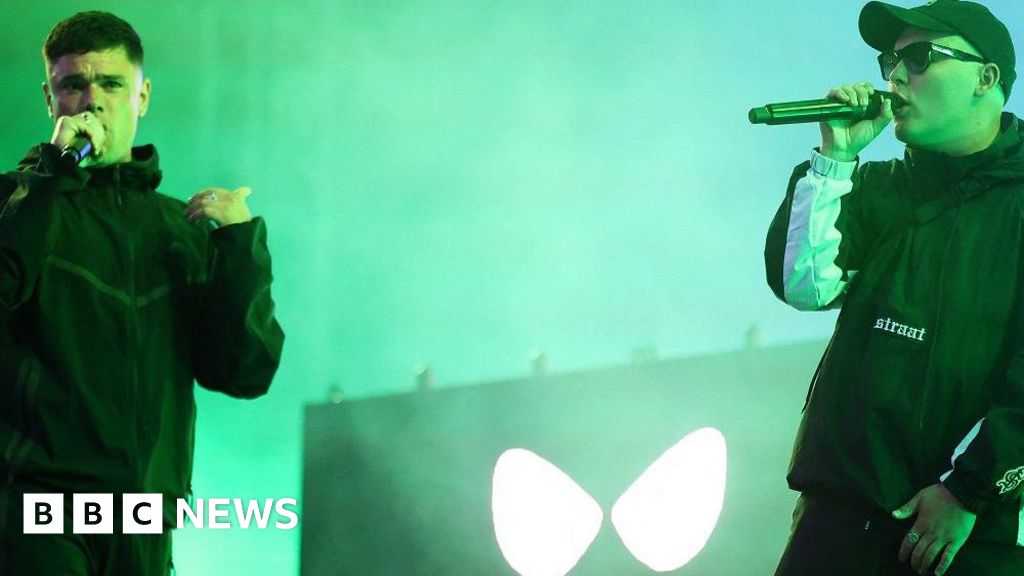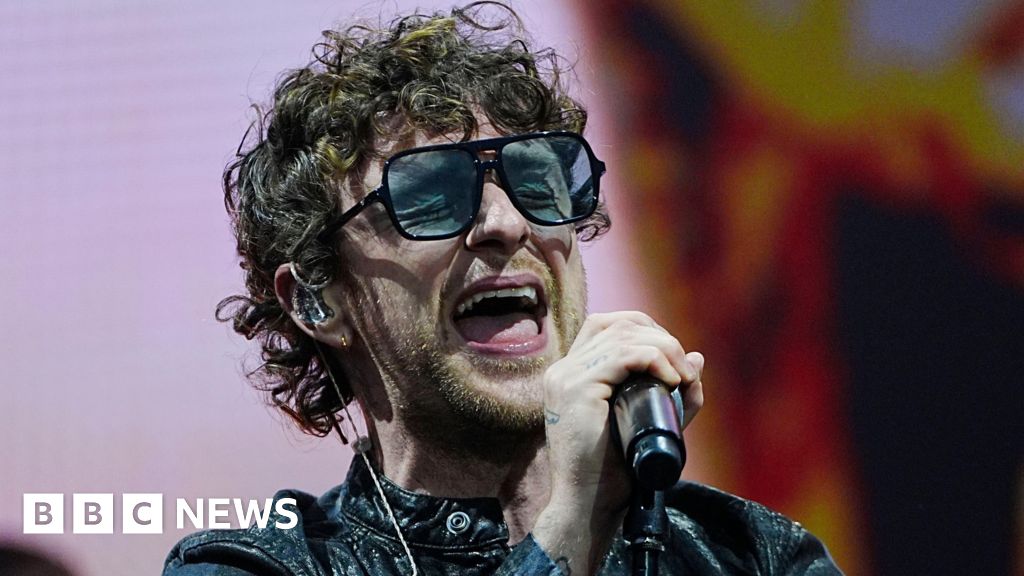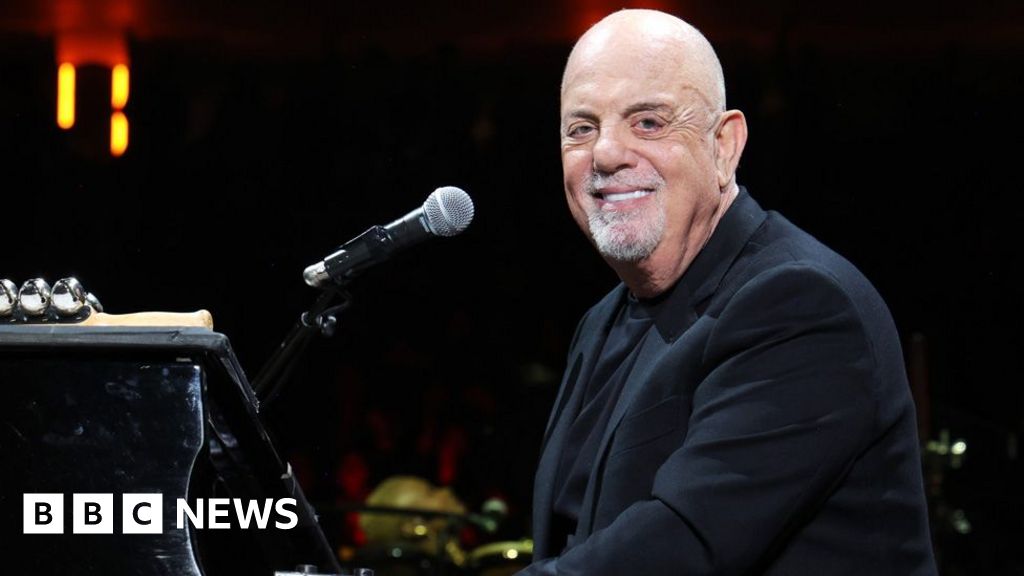ARTICLE AD BOX
 Image source, Getty Images
Image source, Getty Images
Tony Bennett was the great interpreter of the American songbook.
He delighted generations of audiences - from the 1950s to the 2020s - with stylish renditions of classic songs.
In 1951, Bennett had his first big hit with Because of You. In 2021, Love For Sale - his second album of duets with Lady Gaga - followed it to the top of the charts.
He was the oldest man to have a number one album in the United States and, in a seven-decade career, sold more than 50 million records worldwide.
He won two Emmys and 19 Grammy Awards, but perhaps the greatest compliment came from none other than Frank Sinatra.
"Tony Bennett", he said simply "is the best singer in the business. He excites me when I watch him. He moves me. He's the singer who gets across what the composer has in mind, and probably a little more."
Image source, Getty Images
Image caption,Frank Sinatra called Tony Bennett "the best singer in the business"
Inherited talent
Born in August 1926, Anthony Dominick Benedetto grew up in poverty in the Queens district of New York.
His father, John, was an Italian immigrant who scratched out a living as a grocer. After a long period of ill-health, he died when Tony was 10.
Bennett believed that his talent was inherited and that his father's early death pushed him to succeed.
"The legend in my family," he said, "was that [my father] used to stand at the top of a mountain and the whole valley would hear him sing. That is the reason I'm singing."
His mother, Anna, encouraged his love of music. She worked long hours during the week as a seamstress but, on Sundays, she put on family concerts starring her children.
Image source, Getty Images
Image caption,Tony Bennett photographed in 1950
Bennett's opera-loving older brother, John, was good enough to perform arias as a teenager at the Metropolitan Opera in New York. The press called him "the little Caruso", after the great Italian tenor.
Tony, on the other hand, preferred the popular tunes of the day: particularly Bing Crosby and the jazz and blues singer Al Jolson.
He also spent hours painting and drawing. At the age of 12, a local teacher spotted him creating a giant mural in chalk on the pavement outside Bennett's housing project - and took him under his wing.
The singing waiter
He helped Tony win a place at the prestigious New York School of Industrial Art, where he studied artistic and musical technique. But Bennett was eventually forced to drop out, in order to contribute to the family income.
The job he found was as a singing waiter, which he greatly enjoyed - until everything was put on hold for the war.
Image source, Getty Images
Image caption,Tony Bennett was forced to drop out of school to supplement the family income
He served with 63rd Infantry as it fought its way through France and Germany where, he said, he "had a front-row seat in hell". He was lucky to escape with his life on several occasions and took part in the liberation of a concentration camp.
The experience left him a pacifist, with a lifelong hatred of any form of conflict. "Every war is insane," he wrote, "no matter where it is or what it's about."
After hostilities ended, Bennett stayed in Germany as part of a unit to entertain the troops. But, having been spotted eating with a black high-school friend - in an era when the army was racially-segregated - he was reassigned to survey war graves.
On returning home, he studied vocal techniques at the American Theatre Wing School, learning to improvise around the song.
'We'll call you Tony'
In 1949, the famous TV entertainer Bob Hope saw him singing in a Greenwich Village nightclub. Bennett then performed under the stage name Joe Bari, but Hope asked him what he was really called.
"My name is Anthony Dominick Benedetto,' he replied. 'We'll call you Tony Bennett'", declared Hope.
Hope asked Bennett to tour with him around the United States - and the name, like the performer, endured.
Image source, Getty Images
Image caption,Sammy Davis Jr and Tony Bennett performing together on a television show in 1960
Chart success
Two years later, he had his first hit record. Because of You was a lush, heavily-orchestrated number which topped the US charts for 10 weeks.
A version of Hank Williams' country classic Cold, Cold Heart was also successful, and Bennett found himself performing seven live shows a day at the Paramount Theater in New York - starting at 10:30 each morning.
Image source, Getty Images
Image caption,Bennett's wedding in 1952 was besieged by female fans in mourning
In 1952, he married Patricia Beech in a ceremony at St Patrick's cathedral in Manhattan. Two thousand female fans surrounded the venue, dressed in black to indicate mourning.
The rock n' roll revolution failed to dent his popular appeal. In the late 1950s, he had eight hits in the US Top 40 and a first UK number one, with a Broadway show tune, Stranger In Paradise.
Then Bennett pivoted towards jazz. He abandoned the saccharine ballads that had made him famous, in favour of more 'Sinatra-like' arrangements.
In 1962, he released I Left My Heart in San Francisco. At first, it wasn't a huge hit - but the nostalgic elegy for life on the west coast of America became, by far, his most popular song.
Image source, Getty Images
Image caption,Tony Bennett photographed in 1962, the year of his most famous hit
Battling Beatlemania
But Beatlemania changed everything.
A crooner like Bennett found it hard to be heard in the hysteria, and he struggled to get into the charts.
Columbia Records pressured him to record contemporary rock songs. And he was forced to do albums like Tony Bennett Sings The Great Hits of Today! - including a cover of Eleanor Rigby.
"I actually regurgitated when I made that awful album," he recalled. "I got physically sick."
It certainly didn't bring him commercial success. Nor did a misjudged attempt to become an actor in a television drama, The Oscar.
Image source, Getty Images
Image caption,The advent of Beatlemania left Tony Bennett struggling for chart success
A liberal by inclination, Bennett was encouraged by his childhood friend, the actor and singer Harry Belafonte, to lend his support to the civil rights movement.
In 1965, he joined Martin Luther King's third march from Selma to Montgomery, Alabama to bring attention to the desire of African-Americans to exercise their right to vote.
After the march, Bennett was driven to the airport by Viola Liuzzo, a white mother of five who had come to help the cause. Moments after she had dropped him off, she was murdered by the Ku Klux Klan.
Near death experience
The lack of professional success told on his private life.
His marriage failed in 1969, after his affair with the actress Sandra Grant. Bennett and Grant married two years later.
Image source, Getty Images
Image caption,Tony Bennett with his second wife, Sandra Grant
But, by the end of the decade, that relationship was failing, Bennett was addicted to cocaine and the tax authorities were trying to seize his home.
In 1979, he overdosed and had a near-death experience.
"A golden light enveloped me in a warm glow," he later wrote. "But suddenly I was jolted out of the vision and I knew I had to make major changes in my life."
He turned to his sons, Danny and Daegal, who were rock musicians. "Look, I'm lost here," he remembered saying. "'People don't want to hear the music I make."
A new generation
Danny took over as manager. He made few changes to Tony's look and the music still came from the Great American songbook, but the focus was on a new generation.
Regular slots were secured on MTV, The Simpsons and talk shows like David Letterman.
"We didn't make it cool to like Tony Bennett," Danny explained. "We just put him in places that were cool to be."
Image source, Getty Images
Image caption,Tony Bennett's music unexpectedly reached a new generation in the 1990s
"I realised that young people had never heard those songs," said Bennett, "Cole Porter, Gershwin - they were like, 'Who wrote that?' To them, it was different. If you're different, you stand out."
In 1994, his MTV Unplugged: Tony Bennett album - featuring duets with KD Lang and Elvis Costello - was declared album of the year at the Grammy Awards.
Image source, Getty Images
Image caption,Tony Bennett released an album with Amy Winehouse shortly before her death in 2011
Four years later, there was a rapturous reception at Glastonbury, dressed in an immaculate white suit. And, as a new millennium dawned, the 70-year-old was performing more than 100 shows a year.
To celebrate becoming an octogenarian, he released an album featuring duets with the likes of Paul McCartney, Barbra Streisand and Elton John - which won more Grammy Awards.
In 2011, Body and Soul - a collaboration with Amy Winehouse recorded just before her death - made the Billboard Hot 100, making Bennett the oldest living artist to chart in its history.
A timeless talent
Even greater success came from a partnership with Lady Gaga. They collaborated on a new version of The Lady is a Tramp for his Duets II album in 2011.
Thy went on to record their first joint album, Cheek to Cheek, which sold three quarters of a million units in the United States and led to a successful tour.
In 2021, their second record - the Cole Porter tribute album, Love For Sale - was also a huge commercial success.
Image source, Getty Images
Image caption,In his 90s, Tony Bennett recorded two successful albums with Lady Gaga
Tony Bennett's health was too poor to allow him to promote it. Six years earlier, he had been diagnosed with a degenerative condition: Alzheimer's.
He will be remembered as a natural entertainer; a timeless talent, whose career took off, hit the rocks and was then reborn for a new generation.
His partner, Susan, explained that the disease - in his final years - left him struggling to recognise "mundane items like a fork or his keys".
But, she said, "he could still stride out into the spotlight and acknowledge the audience's applause."

 1 year ago
79
1 year ago
79








 English (US) ·
English (US) ·